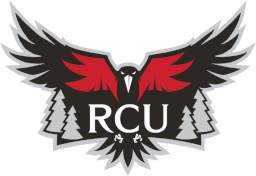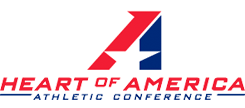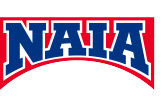Philosophy
1. Ground Base Movements
Ground based movements are movements that are performed with the athlete's feet on the ground. Performing movements with the feet on the ground are much more productive than performing movements seated or lying down. If an athlete competes with their feet on the ground then the must train in that manner. An individual's ability to produce force against the ground determines how fast they can run and how high they can jump. Physics proves that with every action there is an equal and opposite reaction. Performing these movements also makes the individuals aware of where there body is relative to space. This is called kinesthetic awareness and is critical to athletic success. The body's torso and joints are working together to be able to perform movements that are ground based. This in turn strengthens the joints and makes them less susceptible to injury.
2. Multiple Joint Movements
Multiple joint movements are used for a couple of reasons. Firstly, they replicate the movement the individual will do during competition. Very rarely does an athlete isolate an individual joint. Joints are used simultaneously to perform complex movements that occur. Secondly, multiple joint movements are used to train more muscle mass at one time. Instead of performing movements that use less muscle mass, we can be more productive by using multiple joint movements.
3. Three Dimensional Movements
Three-dimensional movements are performed to replicate the movement of athletic skills. Athletic skills require the athlete to simultaneously move up and down, side-to-side, and forward and backward. The only way to train in different plains is by using free weights. Free weights allow the athlete to work primary muscles in conjunction with synergist or stabilizing muscles to perform movements.
4. Explosive Training
Explosive movements are a part of athletics. An athletic performance program must entail explosive training. Training explosively requires the athlete to move weight in the smallest amount of time possible. Using free weights and performing plyometrics does this. Training to increase the speed of the movement recruits more fast twitch muscle fibers, which increases power output. If you train slowly, you will become slow. Strength alone will not bring success, power is essential.
5. Progressive Overload
Progressive overload is a systematic increase in the volume, frequency, and intensity of stresses placed on the body, over a period of time. The body breaks down going into a catabolic state in response to overload. With proper rest and nutrition the body will adapt and recover. By compensating repeatedly over and over the muscle develops more strength or endurance. The training load, or amount of weight lifted, is a fundamental part of strength training. It is the application of the load that will maximize an athlete's performance.
6. Periodization
Periodization is the progressive cycling of training (specificity, intensity, and volume) regulated by the period of the year and the maturity of the athlete. The variation of training doesn't allow the neuromuscular system to fully adapt to the training stimulus. If there is no variation in the stimulus then a plateau in performance will occur.
7. Specificity of Training
When the specificity principle is applied to conditioning it refers to the type of energy system used for that specific sport. The objective of conditioning is to improve the energy capacity of the athlete to improve on-field performance. There are three energy systems that the body has available to it: ATP, Lactic Acid, and Oxygen. The ATP system provides energy for explosive bouts of exercise lasting up to 8 seconds. The Lactic Acid system provides energy for bouts lasting 8 seconds to 2 minutes. The Oxygen system provides energy for bouts lasting greater than 2 minutes. The time frame given for each energy system overlaps and varies from person to person.
The first step to designing a conditioning program is to determine the energy system a specific sport utilizes. A power sport such as soccer requires short, high intensity movements that require energy from the ATP system. Long duration sports such as cross-country require that the Oxygen system be used to provide energy for the athlete. Research has shown that building an aerobic base can be counter productive to developing strength, speed, and power. There are physiological differences why a soccer player, a basketball player, and a cross-country runner train differently.
8. Interval Training
Interval training is work or exercise followed by a specific rest period. In order to use the appropriate energy system for a specific sport, the correct intensities, duration, and rest intervals must be used during training.
Training Program Components:
1. Acceleration
Acceleration is the ability to change velocity per unit of time and is very crucial in power sports. During competition an athlete may never reach their top speed, but they will accelerate many times. For example, a soccer player may never reach his/her top speed , but they will have cut and accelerated numerous times.
Acceleration can be improved by:
- Strengthening the legs
- Developing explosive power by performing exercises such as the clean, snatch, jerk, and specific plyometrics
- Training the correct energy systems (proper work:rest ratio)
2. Agility
Agility refers to the body's ability to rapidly change direction in a controlled manner without losing speed. The ability of the body to control its movement and own weight is important. This ability will help improve on-field performance and decrease the chance of injury.
There are two types of agility training that I administer:
- Reactive Agility consists of drills that require the athlete to react to a visual stimulus.
- Programmed Agility consists of predetermined cone, line, hurdle drills
3. Flexibility
Flexibility is the range of motion about a joint. It plays a important role in helping to increase performance and help decrease the possibility of injury. There are two types of stretching that are incorporated into this program.
- Static stretching is a constant stretch that is held for 10-30 seconds.
- Dynamic stretching utilizes movements to stretch the muscle. These movements usually include sport-specific movements.
4. Working with Injured Athletes
I believe that it is necessary that the injured athlete be incorporated into the training program. In most cases the injured athlete has an injured body part, not an injured body. The rest of the body can still be trained. The athletes training program must be altered and individualized to suit their needs. This takes great communication between the sports medicine staff and myself. There are three areas where communication is essential in order for a safe and productive process leading back to competition.
- Prehabilitation - preparation leading to corrective actions
- Rehabilitation - process of regaining range of motion, flexibility strength as well as proper treatment
- Reconditioning - the process to regain preinjury strength, flexibility, and conditioning levels
5. Nutrition and Supplementation
Good nutrition habits play a vital role in the success of an athlete. I believe that the key to instilling these habits starts by educating them about nutrition. Nutritional analysis and consultation should be provided and given to the athletes.
A student-athletes schedule is so demanding that it is hard for them to get 4-6 quality meals throughout the day. It is imperative that these athletes get the nutritional calories needed to develop and succeed as an athlete. Supplementation is one way that an athlete can get the calories needed and still fulfill the demands of their schedule. However, all supplements must adhere to the NCAA guidelines concerning banned substances and must be approved by the Strength & Conditioning staff. It is also important to note that athletes must not rely solely on supplement use.
6. Single Leg Strength
Double leg push does not occur that often in competition. Many athletic movements require the body to perform unilaterally. Single leg push off occurs frequently in competition and practice. It is necessary to perform single leg movements to increase the strength of the leg and develop the neuromuscular pattern or movement required.
7. Speed
Speed consists of two components: stride frequency and stride length. Stride frequency is the number of steps taken in a certain amount of time. Stride length is the distance that is covered during one stride.
Speed can be improved by:
- increasing the stride length and/or stride frequency
- strengthening the legs (increase force output)
- training the proper energy system (correct work:rest ratio)
- improving running mechanics (PAL system)
Linear
Posture
Arm Action
Leg Action
Lateral
Push
Athletic Base
Low Center of Gravity
8. Torso Training
The torso is one of the most important areas of the body and one of the most neglected. Training the torso will help increase physical performance not only in the weight room, but on the playing field as well. It is also a preventative measure to decrease the chance of injury. The torso training will include inner unit training, stabilization, torso forward flexion, rotation, and lateral flexion.
9. Warm-up
The purpose of the warm-up is to increase the body's blood flow, heart rate, respiration, and core temperature. Depending on the day of the week and the training cycle, the warm-up will consist of:
- Air Dyne Bike - Medicine Ball Passes
- Jump Rope - Torso Training
- Dynamic flexibility - Ladder Drills/Dot Drills

















